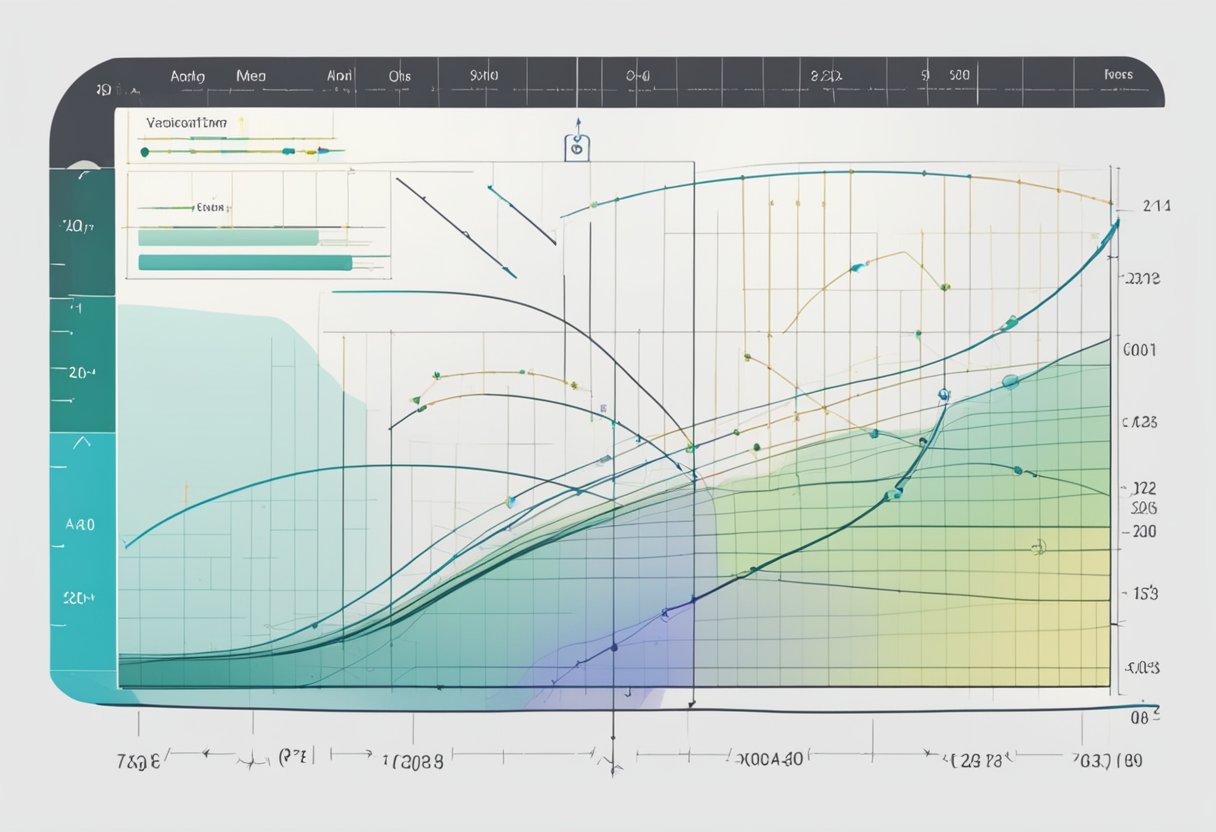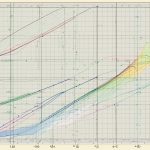Types Of Function Graphs
Function graphs are an essential tool in mathematics, used to visually represent functions and their properties. There are various types of function graphs, each with unique characteristics and purposes. Understanding the fundamentals of function graphs is crucial for students and professionals alike to navigate the complex world of mathematics.
Linear and quadratic functions are two of the most common types of function graphs. These graphs are used to represent relationships between two variables, with linear functions showing a straight line, and quadratic functions showing a curved line. Polynomial and rational functions are also prevalent, with polynomial functions displaying a smooth curve and rational functions showing a discontinuous curve. Exponential, logarithmic, and trigonometric functions are used to represent exponential growth, logarithmic decay, and periodic functions, respectively.
Specialized and advanced function graphs are used in specific fields such as physics, engineering, and economics. These graphs include Fourier series, Bessel functions, and Legendre polynomials. These graphs are more complex and require a higher level of understanding and expertise to interpret and use effectively. Understanding the different types of function graphs is crucial for students and professionals in various fields to use mathematics effectively.
Key Takeaways
- Function graphs are a fundamental tool in mathematics used to represent functions and their properties.
- Linear, quadratic, polynomial, rational, exponential, logarithmic, and trigonometric functions are some of the most common types of function graphs.
- Specialized and advanced function graphs are used in specific fields and require a higher level of understanding and expertise to interpret and use effectively.
Fundamentals of Function Graphs

Defining Functions and Graphs
Functions are mathematical entities that describe the relationship between input and output values. The graph of a function is a visual representation of this relationship. In other words, the graph of a function is a plot of all the ordered pairs that satisfy the function’s equation.
Domain and Range
The domain of a function is the set of all possible input values for which the function is defined. The range of a function is the set of all possible output values that the function can produce. The domain and range of a function can be determined by analyzing its equation or by examining its graph.
The Cartesian Plane and Charting Functions
The Cartesian plane is a two-dimensional coordinate system that is used to chart functions. The x-axis represents the domain of the function, while the y-axis represents the range of the function. To chart a function, one must plot ordered pairs of the form (x,f(x)), where x is an input value and f(x) is the corresponding output value.
When charting a function, it is important to keep in mind that the graph of a function must pass the vertical line test. This means that any vertical line that intersects the graph of the function can only do so at one point. If a vertical line intersects the graph of a function at more than one point, then the graph does not represent a function.
In summary, understanding the fundamentals of function graphs is crucial for anyone studying mathematics. By knowing how to define functions and graphs, determine their domain and range, and chart them on the Cartesian plane, one can gain a deeper understanding of the relationship between input and output values.
Linear and Quadratic Functions
Graphing Linear Functions
Linear functions are functions that graph as a straight line. These functions have a constant rate of change, which means that for every unit increase in the input variable, there is a constant increase or decrease in the output variable. The graph of a linear function is a straight line, and it can be graphed using the slope-intercept form of the equation.
The slope-intercept form of the equation of a line is y = mx + b, where m is the slope of the line and b is the y-intercept. The slope of a line is the ratio of the change in the y-value to the change in the x-value, and it determines the steepness of the line. The y-intercept is the point at which the line crosses the y-axis.
Characteristics of Quadratic Functions
Quadratic functions are functions that graph as a parabola. These functions have a degree of two, which means that the highest power of the variable is two. The general form of a quadratic function is f(x) = ax^2 + bx + c, where a, b, and c are constants.
The graph of a quadratic function is a parabola, which is a U-shaped curve. The vertex of the parabola is the point where the curve changes direction, and it can be found using the formula x = -b/2a. The axis of symmetry is the vertical line passing through the vertex.
Quadratic functions can open up or down depending on the sign of the leading coefficient, a. If a > 0, the parabola opens up, and if a < 0, the parabola opens down. The x-intercepts of the parabola are the points at which the curve crosses the x-axis, and they can be found using the quadratic formula.
In summary, linear and quadratic functions are two types of function graphs that have distinct characteristics. Linear functions graph as straight lines with a constant rate of change, and they can be graphed using the slope-intercept form of the equation. Quadratic functions graph as parabolas with a degree of two, and they can be graphed using the general form of the equation. The vertex and axis of symmetry are important features of the parabola, and they can be used to find the x-intercepts of the function.
Polynomial and Rational Functions
Higher-Degree Polynomials
Polynomial functions are functions that can be expressed as a sum of powers in one variable, with coefficients that are constants. These functions are often used to model real-world phenomena, such as population growth or the trajectory of a projectile. The degree of a polynomial is the highest power of the variable in the function, and it determines the shape of the graph.
Higher-degree polynomials, such as cubic or quartic functions, have more complex shapes than lower-degree polynomials. They can have multiple turning points, or points where the graph changes direction, and they can exhibit behavior such as symmetry or asymptotes. Understanding the behavior of higher-degree polynomials is important in many fields, including physics, engineering, and economics.
Rational Functions and Asymptotes
Rational functions are functions that can be expressed as a ratio of two polynomials. They often arise in situations where one quantity is divided by another, such as in the case of a ratio of distances or rates. Rational functions can have vertical or horizontal asymptotes, which are lines that the graph approaches but never touches.
Vertical asymptotes occur when the denominator of the rational function equals zero, and they represent points where the function becomes undefined. Horizontal asymptotes occur when the degree of the numerator and denominator of the rational function are equal, and they represent the limit of the function as the input approaches infinity or negative infinity.
Understanding the behavior of rational functions is important in many fields, including finance, biology, and physics. For example, in finance, rational functions can be used to model the relationship between risk and return in investment portfolios. In biology, rational functions can be used to model the growth of populations or the spread of diseases. In physics, rational functions can be used to model the motion of objects under the influence of gravity or other forces.
Exponential, Logarithmic, and Trigonometric Functions
Growth and Decay in Exponential Functions
Exponential functions are a type of function that grows or decays exponentially, meaning that the rate of growth or decay is proportional to the current value of the function. These functions can be written in the form f(x) = a^x, where a is a constant greater than 1 for growth and between 0 and 1 for decay.
Exponential functions are commonly used to model growth and decay in fields such as biology, finance, and physics. For example, the growth of a population of bacteria can be modeled using an exponential function, as can the decay of a radioactive substance.
Understanding Logarithms and Their Graphs
Logarithmic functions are the inverse of exponential functions, meaning that they undo the effects of an exponential function. They can be written in the form f(x) = loga(x), where a is the base of the logarithm.
Logarithmic functions are useful for solving exponential equations and for analyzing the behavior of exponential functions. They also have their own unique properties, such as the fact that the logarithm of a product is equal to the sum of the logarithms of the factors.
The graph of a logarithmic function is the mirror image of the graph of the corresponding exponential function across the line y = x. As such, logarithmic functions have a domain of (0, infinity) and a range of (-infinity, infinity).
The Wave Nature of Trigonometric Functions
Trigonometric functions are functions of angles that relate the ratios of the sides of a right triangle. The six basic trigonometric functions are sine, cosine, tangent, cosecant, secant, and cotangent.
Sine and cosine functions are particularly important, as they are used to model periodic phenomena such as sound waves, light waves, and the motion of a pendulum. These functions have a period of 2π, meaning that they repeat every 2π units of x.
The graphs of sine and cosine functions are sinusoidal, meaning that they have a wave-like shape. They oscillate between a maximum value of 1 and a minimum value of -1, and have a range of (-1, 1).
Specialized and Advanced Function Graphs
Piecewise-Defined and Power Functions
Piecewise-defined functions are functions that are defined using different formulas on different intervals. These functions are often used to model real-world situations where different formulas are needed to accurately describe the situation. For example, a piecewise-defined function might be used to model the cost of a taxi ride, where the cost is different for the first few miles and then changes to a different formula for miles beyond that point.
Power functions are functions of the form f(x) = ax^b, where a and b are constants. These functions are used to model relationships where one variable is proportional to a power of the other variable. For example, the distance traveled by an object falling under the influence of gravity is proportional to the square of the time elapsed.
Inverse and Transcendental Functions
Inverse functions are functions that “reverse” the action of another function. For example, if f(x) = 2x, then the inverse function is f^-1(x) = x/2. Inverse functions are useful when solving equations involving the original function.
Transcendental functions are functions that are not algebraic, meaning they cannot be expressed using only algebraic operations. These functions include trigonometric functions, exponential functions, and logarithmic functions. Trigonometric functions are used to model periodic phenomena such as waves and oscillations. Exponential and logarithmic functions are used to model growth and decay processes.
Overall, specialized and advanced function graphs are an important tool for modeling real-world situations and solving mathematical problems. By understanding the properties of these functions and how they relate to each other, mathematicians and scientists can gain insight into the behavior of complex systems and phenomena.






